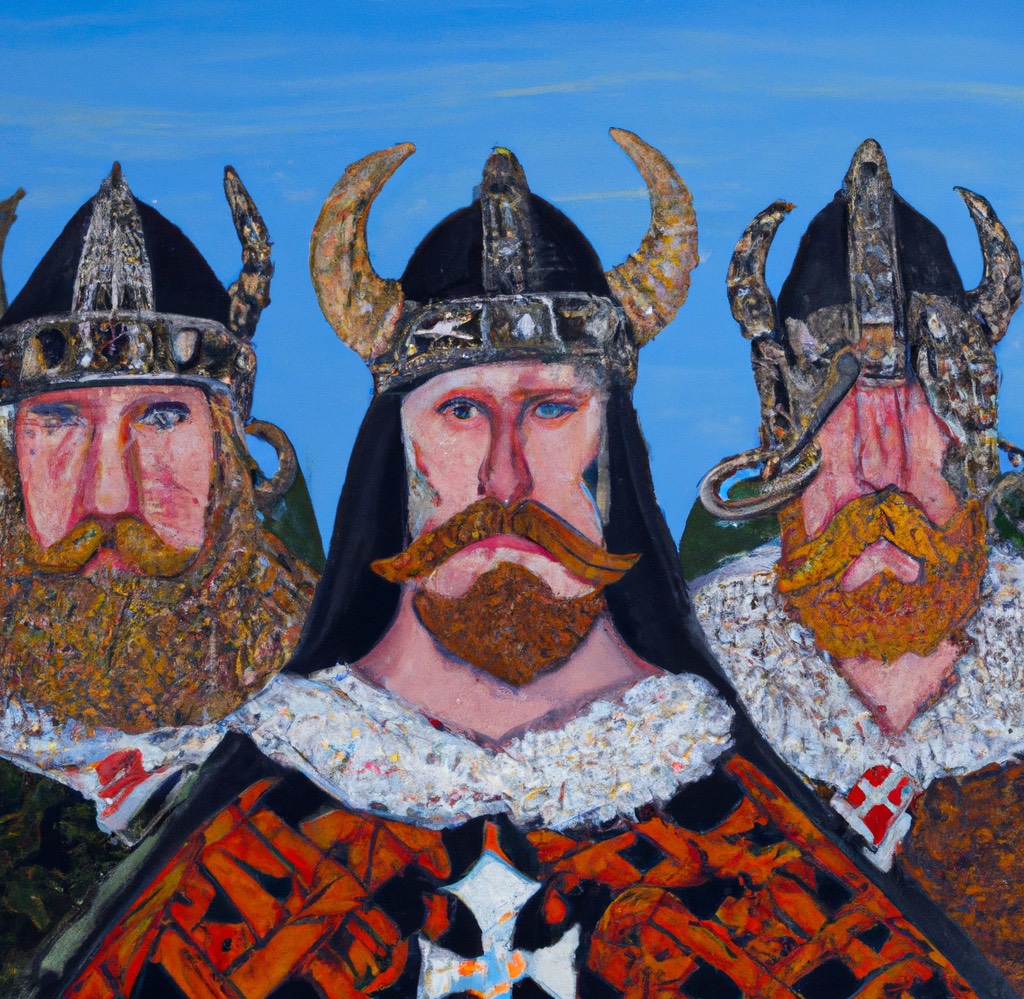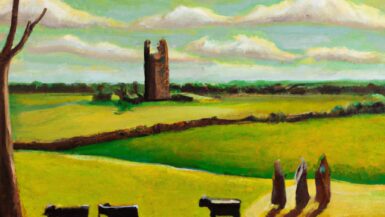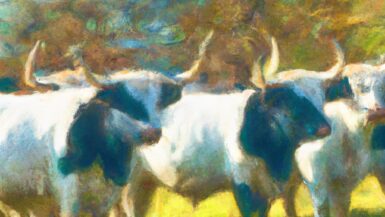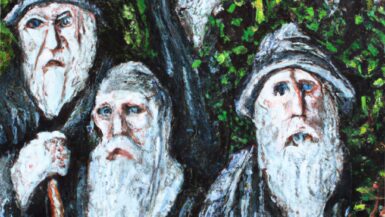The High Kingship of Ireland, a title of profound honor and respect, stands as a unique blend of myth, legend, and reality. These figures, often painted larger than life in tales and sagas, have been central to Ireland’s understanding of its past, shaping its identity and national pride.
Legendary Beginnings
The Book of Invasions
Our journey starts with the “Lebor Gabála Érenn” or “The Book of Invasions.” This medieval text chronicles Ireland’s early settlers, from the biblical Noah’s granddaughter Cessair to the Milesians, considered the Gaelic forebears of the Irish. It’s in this book that many of our legendary High Kings first appear.
The Fomorians and the Partholónians
Two of the earliest races in Irish legends, the monstrous Fomorians and the heroic Partholónians, clash in battles, with High Kings emerging as pivotal figures. Though they held the throne for centuries, their reigns are mythical, with no concrete evidence in the archaeological record.
Age of the Tuatha Dé Danann
Arrival of the Deities
The Tuatha Dé Danann, often considered gods or demi-gods, came next, imbued with magic and mystery. Figures like Nuada of the Silver Hand, who lost and then regained his kingship, and the Dagda, a master of druidry, were among the Tuatha Dé’s great High Kings.
Battles for Supremacy
Tales of epic battles like the First and Second Battles of Magh Tuiredh showcase the power struggles among the Tuatha Dé, often culminating in the crowning of a new High King. These stories are rich with magic, valor, and the supernatural.
The Milesian Epoch
From Iberia to Ireland
Descendants of the mythical King Milesius of Spain, the Milesians arrived in Ireland, seeking a land prophesized to them. After battling the Tuatha Dé Danann, they established their dominion over Ireland, leading to a new line of High Kings.
The Legendary Lineage
Famous names like Eremon, Eber Finn, and Conn of the Hundred Battles are among the illustrious Milesian High Kings. Their reigns are filled with tales of prosperity, territorial conquests, and legendary feasts.
The Real vs. The Mythical
Historical Facts Amidst Tales
While many of the early High Kings are mythological, some historical figures were woven into the tapestry of legends. Niall of the Nine Hostages, for instance, is a figure that sits on the boundary of myth and reality. His lineage, the Uí Néill dynasty, would produce many historical High Kings.
The Lia Fáil: The Stone of Destiny
Central to the High Kings’ legends is the Lia Fáil, a standing stone located at the Hill of Tara. It’s said to roar in joy when the rightful king stood upon it. While the stone’s origins remain shrouded in mystery, its ties to the High Kingship are undeniable.
Impact of the Mythical Kings on Irish Culture
A Source of National Pride
Even though many of the High Kings may be products of legend, they remain integral to Irish identity. Their stories have offered a sense of continuity, connecting modern Ireland to a mythical, golden age.
Modern Rediscoveries and Interest
With the resurgence of interest in Celtic mythology and the Gaelic revival, the tales of the High Kings have found new audiences. Their stories are retold in books, films, and music, underscoring their timeless appeal.
In delving into the history and legends of the High Kings of Ireland, we unearth a world where the boundaries between myth and history are fluid. These kings, whether real or legendary, stand as monumental figures, their tales echoing the aspirations, beliefs, and values of the Irish through the ages. As both historical anchors and figures of inspiration, the High Kings of Ireland continue to reign supreme in the cultural memory of the Emerald Isle.






Leave a reply